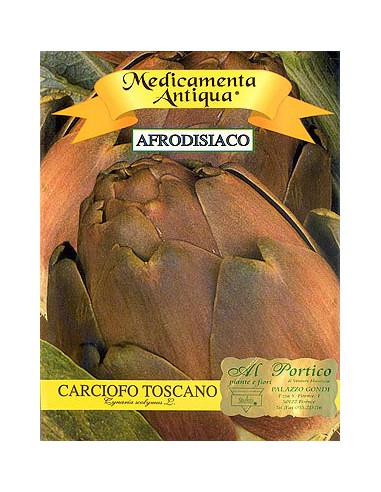Artichoke of Tuscany
- A pluriennal plant, 60/100 cm. in height, it requires a mild winter climate.
- SOWING: use of the seed preserves the variety. It is sown from the 2nd to the 3rd month in full soil, fromthe 3rd month of the winter to the 1st month of spring in a seedbed, followed by transplanting in autumn. It requires abundant watering.
- TUSCANY HERB
The Cynara is typical of the Mediterranean region where it grows wild as Carduccio ( C. cardunculus ). Widely cultivated in the Maremma along the Tuscan coast as a foodstuff, its flowers are eaten both raw and cooked. When cooked the plant is less easily digested and must be eaten immediately because toxins are released when it is conserved. The leaves ( and to a lesser exent the flower ) are used for medicinal purposes in cynarotherapy, wich is beneficial to the heart and blood circulation. The plant's properties are varied and noteworthy: it is considered an aphrodisiac ( increasing potency and sexual desire ), it is hypoglycaemic, tonifies, and aids in combating cellulite and obesity.
- A pluriennal plant, 60/100 cm. in height, it requires a mild winter climate.
- SOWING: use of the seed preserves the variety. It is sown from the 2nd to the 3rd month in full soil, fromthe 3rd month of the winter to the 1st month of spring in a seedbed, followed by transplanting in autumn. It requires abundant watering. TUSCANY HERB

